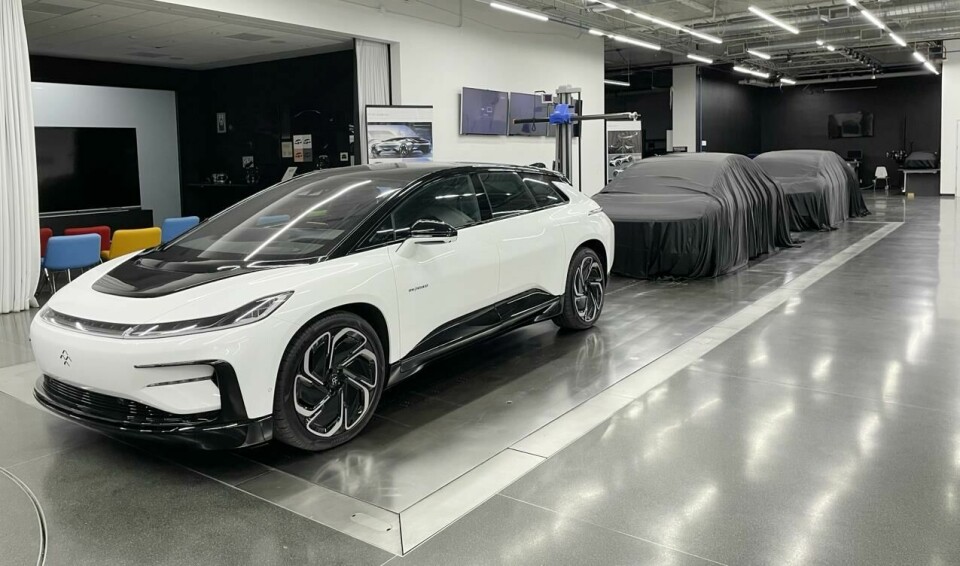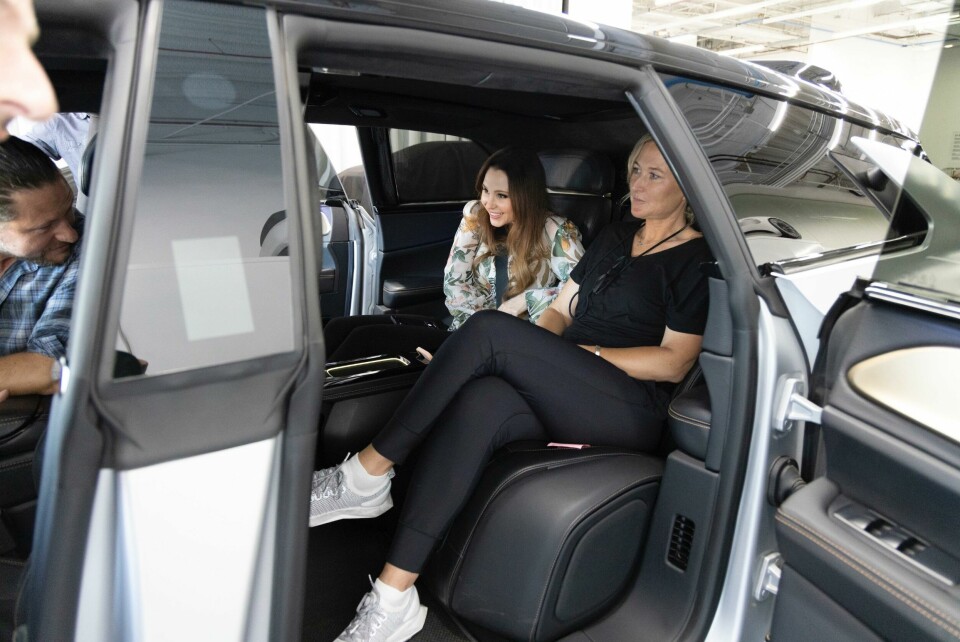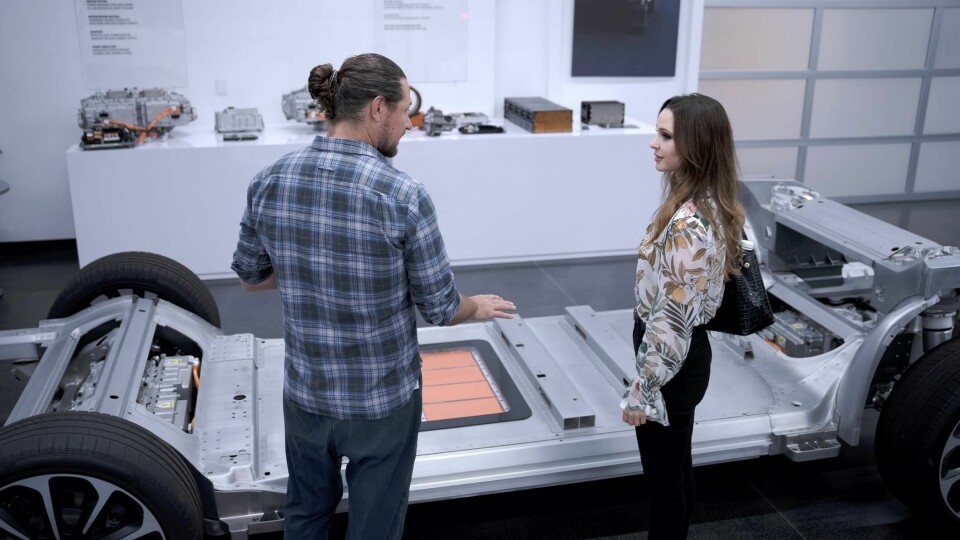
Exclusive: Inside Faraday Future’s California design studio
Amidst the startup’s ups and downs, designers are still working toward a full EV lineup. CDN got an inside look at its California design studio and learned how CMF has played a pivotal role in the overall design of its debut car
Yes, Faraday Future still exists. It’s been a tumultuous nine years for the California-based startup, which has endured funding issues, investor disputes and management shuffles.
Recently, Faraday’s board ousted global CEO Carsten Breitfeld, who previously co-founded and led the now-defunct EV startup Byton, and before that spent a decade at BMW Group. Now, led by the company’s previous China CEO, Xuefeng Chen, Faraday Future says it’s secured additional capital and is on its way to starting production of its flagship FF 91 at the end of March 2023.

Through it all, the Faraday Future design team shows up and gets to work. Operating out of a former Nissan office building in Los Angeles County’s South Bay (once the heart of America’s aerospace industry), the two-storey design studio and related operations house about 24 designers across 24,000 square feet of space. There, design director Page Beermann (previously with BMW in Munich and Designworks in California) oversees departments including interior, exterior, industrial design, CMF, UI/UX, brand design, CAD and other disciplines.
In between the Nissan and Faraday residencies, the space was used by Chinese clothing company Fang Fashion. “When the [Faraday] founders came here in 2014, they already had the idea for the name of their company,” Beermann told us during an exclusive tour. “When they saw the FF signage, they were like, wow, the building is already branded for us. You could say it was a sign,” he mused.
We are all one big team sitting together
An extensive, year-long renovation resulted in a design studio that boasts an impressive armory of equipment, including three surface plates, a five-axis Tarus gantry mill, 3-axis metals mill, machine shop, wood shop, paint booth, power wall, “a lot” of 3D printers, an outdoor viewing area, and more.
“Downstairs is where a lot of the handwork happens,” Beerman explains. “Upstairs, we are all one big team sitting together. It has to be this way because a lot of the solutions on the FF 91 were totally custom. For example, the coach door system required a new hinge design, and there was an intense collaboration between design and engineering to make that happen.”
Faraday Future developed a number of prototypes over the years as it worked to finalise its first production car, the FF 91. The company’s Variable Platform Architecture (VPA), as well as its motors and batteries, were developed in-house. Because of this, Beermann and team had the freedom to bend traditional design rules and typologies to achieve two main goals: maximise interior volume and enable a great experience from every seat.
“We all worked together to figure out how to enable that — a car where you can work, sleep or watch movies like a first class airline, and that really didn’t exist,” Beermann explains. “Something that’s different about this architecture that directly affects proportion is where the windscreen touches down. This is a big differentiator. It’s really far forward, and that sets up a different architecture for the struts on the front and where the cowl is, and these all have to interface with each other in a different way. This enables the interior volume to be the priority.”

Despite its arsenal of digital tools and startup mentality, the Faraday Future design team relied heavily on clay modeling throughout the development process.
“You have 100 years of lineage when it comes to the artisans that do the clay modeling,” Beermann explains. “Yes, it has become a lot more digital recently, but if you skip those [traditional] steps, you will see it in the end product. You will see something that’s stiff and doesn’t sit on its wheels properly. It needs that hand touch to compensate for all the digital. I’ve been in studios where you mill out a model at the end, and it just doesn’t work. We call it the ‘full size surprise,’” he laughs.
The understanding of CMF design is not always quite there with other brands
Faraday Future’s design philosophy also differs from many traditional studios in that colour and materials design is not only on board from the beginning, but often dictates the interior (and sometimes exterior) design. “Certain materials have different properties that can lead to different solutions down the road,” Beermann explains. “It’s a different perspective and it’s really exciting to see something CMF-driven.”
Colour and materials design at Faraday Future is led by senior design manager Sue Neuhauser, a recent panelist at CDN’s LA Forum at this year’s Los Angeles Auto Show. Neuhauser’s extensive background runs the gamut from traditional luxury OEMs like Audi, to suppliers such as Magna, to startups including Tesla, where she helped to develop the brand’s white vegan leather.
“The understanding of CMF design is not always quite there with other brands, but I feel at Faraday Future the importance is really clear,” Neuhauser explains. “We’ve proactively tried to avoid this idea of, ‘We’re done, here’s a surface, put something in there.’ We’re working together as a cross-functional team to come up with new ideas and to work cohesively to make new concepts.”
Like much of the industry, Faraday Future strives to use materials and processes that are more sustainable and environmentally friendly. Neuhauser is passionate in pointing out that many of the current non-animal materials used in automotive are toxic in their own ways. “It’s greenwashing,” she says. “There’s still a bad reputation with leather, but the tanneries now are processing the material much better. The leather we’re using is fully sustainable and responsibly sourced. We’re using tanneries in Mexico and the carbon footprint is actually pretty low. Beyond that, we’re pushing really hard from design to work with vendors who have really great stories.”
As Faraday Future inches toward production and deliveries, Beerman and the design team hope potential customers recognise an understated simplicity in the luxury EV.
“The philosophy of the Faraday Future design language is to integrate and visually simplify everything as much as possible,” Beermann explains. “A pet peeve of mine is that there’s so much visual noise on a lot of products now. You have feature lines upon feature lines, and volumes and creases, and lighting details. On our car, there are no door handles. You don’t see any of the sensors; we’ve hidden all those in black areas so it’s as pure of a statement as possible. I really want the FF 91 to be a mono-thematic statement, something someone can look at and remember.”










